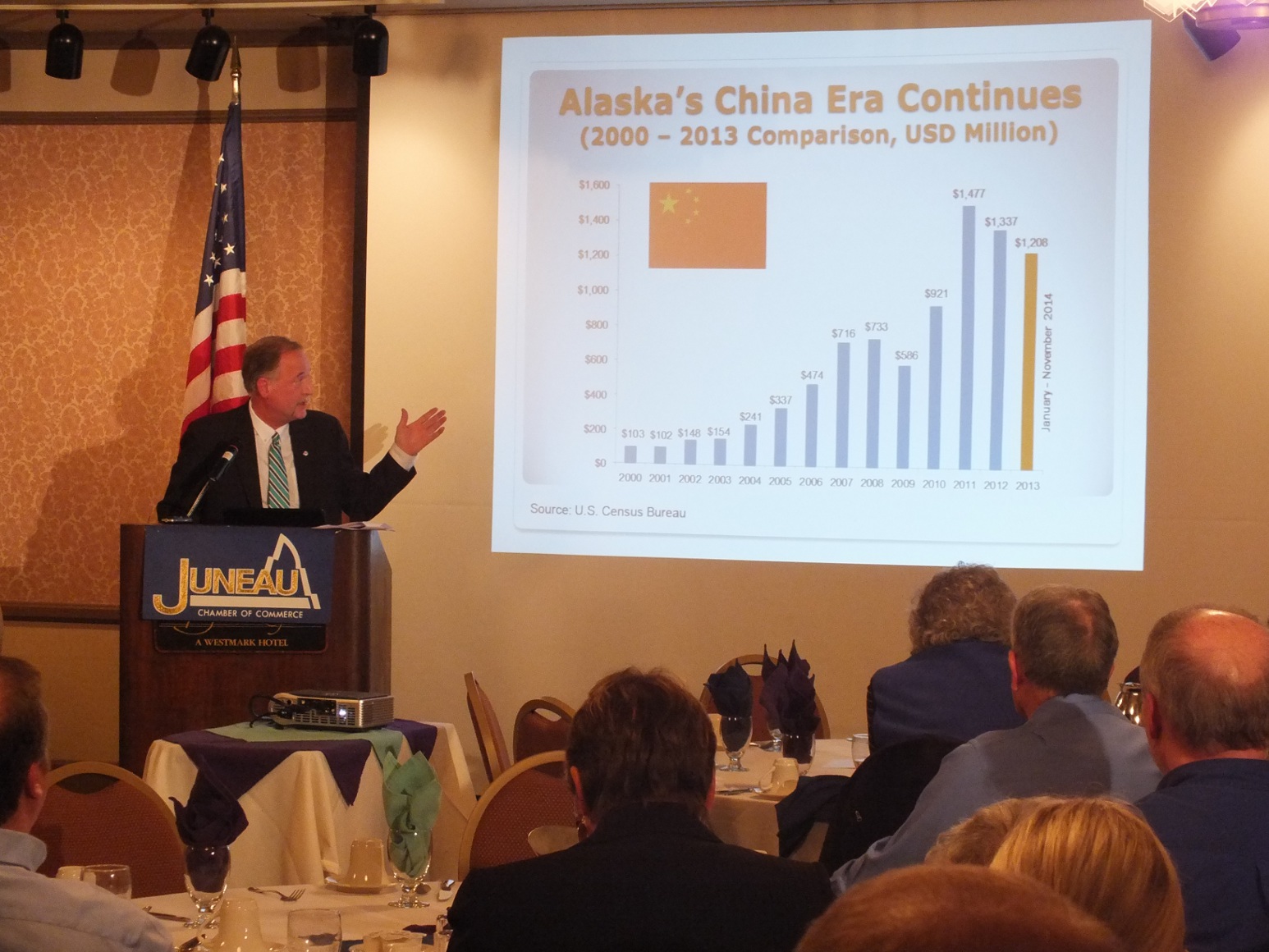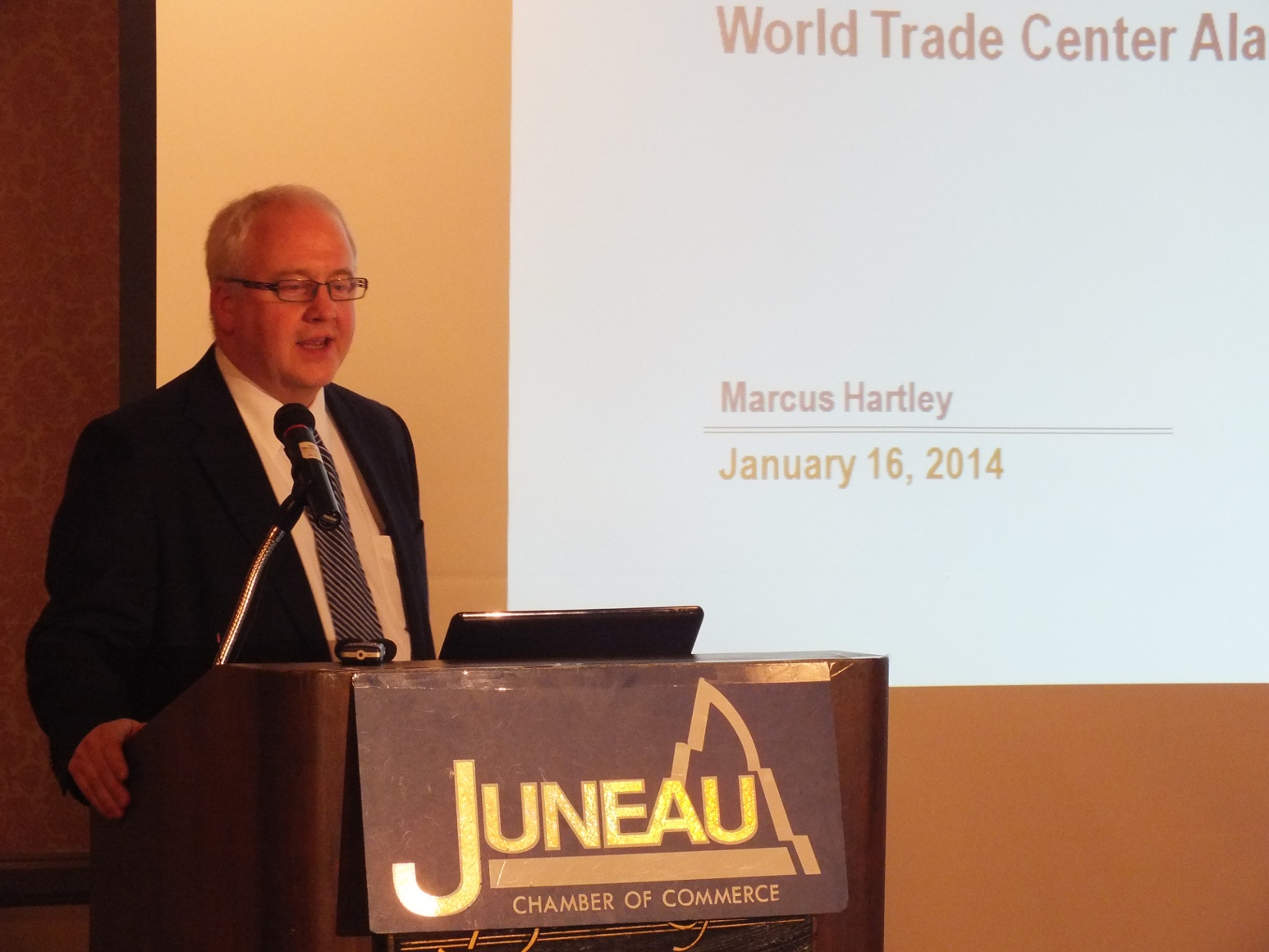
Alaska’s economy slowed in 2013. On Thursday, two economists offered different takes on what that means for this year at the World Trade Center Alaska‘s annual statewide economic forecast talk in Juneau.
Marcus Hartley ticked off how many jobs he expects various industries in Alaska to gain or lose in 2014.
“We see natural resources going up by 200 jobs; transportation and utilities going up by a little bit, a hundred jobs,” he said. “These are not big numbers, but they’re some winners.”
Hartley is a senior economist with Anchorage based consultants Northern Economics. He says other winners include health care, retail, and tourism.
And then there are the losers.
“Here’s my sector – professional business services – we’re saying that that sector is going to be hit pretty hard by government cutbacks,” said Hartley. “And then government is also very likely to lose jobs.”
“So total change, a whopping 450 jobs increase,” he said. “Not too bad. But really, if we’re in a big recovery, where’s all the jobs, dude?”
Hartley says reductions in state and federal spending, as well as the continued decline in North Slope oil production were behind a state economy that slowed in 2013. After several years of growth, he says, Alaska’s gross state product – a measure of total economic output – declined about $2 billion last year to $51 billion. He predicts it will be down another $1.8 billion this year to $49.2 billion.
“So the question is, are we grounded?” he asked

Hartley didn’t give a yes or no answer to that question. But he did say Northern Economics’ computer models painted an even bleaker picture of the state’s economic future.
“We basically threw out our models this year, because it was pessimistic,” Hartley said. “And we just didn’t feel like the world was going to jump off a cliff.”
World Trade Center Alaska Executive Director Greg Wolf was more bullish on the state’s economy. In 2013, he said companies operating in Alaska exported about $4.5 billion worth of goods and services overseas. He expects a similar amount this year.
“Trade represents new money coming into the economy,” Wolf said. “It sustains and results in thousands of both direct and indirect jobs. The overall effect, of course, it results in a stronger, more diversified economy for our state.”
In the past 20 years, Wolf says Alaska exports have more than doubled, from about $2 billion per year to between $4.5 and $5 billion.
“I think this sort of demonstrates that exports have been a pretty consistent part of the economy, and also a quietly growing part of the economy,” he said.
Wolf says Alaska’s biggest trade partners are in Asia. China buys about 28 percent of the goods exported from the state. Japan is second at 16 percent, followed by South Korea, Canada, and Singapore.
Seafood makes up about 50 percent of Alaska exports, followed by minerals and precious metals at 34 percent, energy – including liquefied natural gas, coal, and refined fuels – at 8 percent, and timber at 4 percent.
The Juneau Chamber of Commerce hosted the statewide economic forecast talk, which has been held in the Capital City for the past seven years. The economists were in Fairbanks earlier this week and will be in Anchorage on February 4th.
